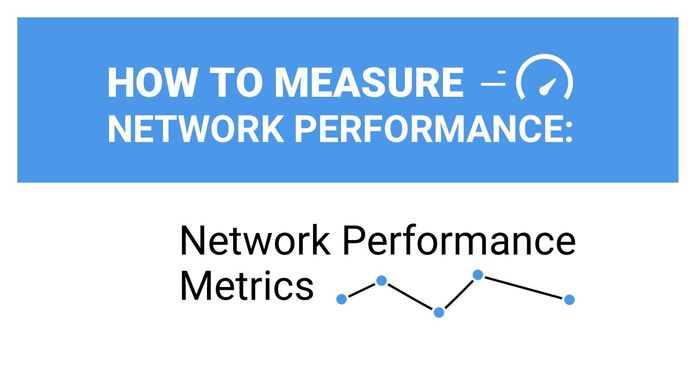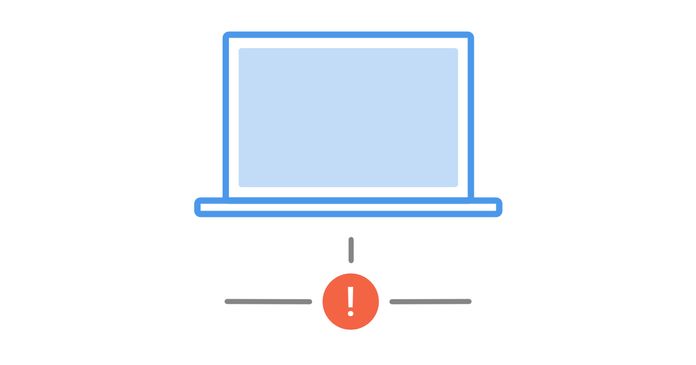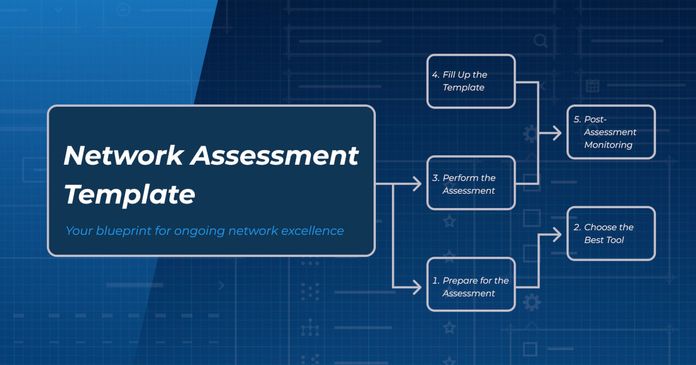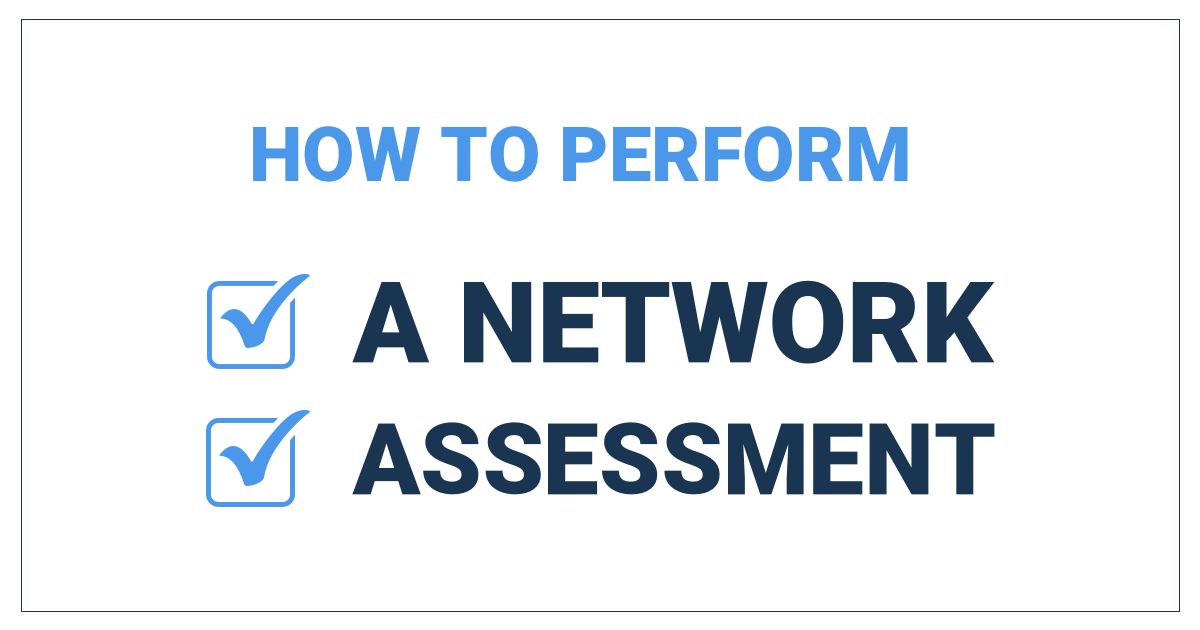Table of Contents
Table of Contents
In the world of networking, where connectivity and data flow are at the heart of operations, a network hiccup can spell disaster. The digital transformation wave has engulfed businesses of all sizes, and as companies become increasingly reliant on their networks to serve customers, collaborate with teams, and manage critical processes, the demand for robust and efficient network performance has never been higher.
Picture this: Your business is running like a well-oiled machine. Employees are seamlessly communicating, customers are engaging with your services, and productivity is soaring. But suddenly, your network slows to a crawl, causing delays, frustration, and lost opportunities. It's a scenario all too familiar in today's interconnected world.
This is where network capacity monitoring steps in as the unsung hero of modern business operations. Think of it as the guardian angel that ensures your network infrastructure can handle the demands placed upon it. In this blog post, we'll dive deep into the world of network capacity monitoring, unveiling the critical role it plays in transforming your network from a potential bottleneck into an engine of productivity, efficiency, and innovation.
So, fasten your seatbelts as we embark on a journey to unlock the power of network capacity monitoring and shift your business operations from overload to overdrive. Whether you're a small startup or a multinational corporation, understanding and implementing these strategies can be the game-changer your business needs to thrive in the digital age. Let's get started!
First, let’s start with the basics.
Network capacity, also known as bandwidth or network bandwidth, refers to the maximum amount of data that can be transmitted through a network connection in a given amount of time, typically measured in bits per second (bps) or a multiple thereof, such as kilobits per second (Kbps), megabits per second (Mbps), or gigabits per second (Gbps).
In simpler terms, network capacity is like the width of a highway; it determines how much data can flow through the network at any given moment. It is a critical aspect of network performance, as it directly impacts the speed and reliability of data transmission.

Network capacity is affected by several factors, including:
- Network Infrastructure: The type of networking equipment, such as routers, switches, and cables, can affect the network's capacity. Upgrading to higher-capacity equipment can increase the network's capacity.
- Bandwidth: Bandwidth is the amount of data that can be transmitted over a network connection in a specific amount of time. Higher bandwidth connections can handle more data and therefore have greater network capacity.
- Network Traffic: The amount of data being actively transmitted across the network at any given time can impact network capacity. High network traffic can lead to congestion and reduced available capacity.
- Quality of Service (QoS): Network management techniques, like Quality of Service, can be used to prioritize certain types of traffic, ensuring that critical data gets sufficient capacity even during periods of high demand.
- Latency: High latency can reduce effective network capacity because it increases the time it takes for data to traverse the network.
Imagine a network as a busy highway connecting all your digital destinations. The speed at which you can travel, the number of lanes available, and the absence of traffic jams all play a crucial role in your journey's efficiency. This analogy perfectly illustrates the significance of network capacity in the world of information technology.
Network capacity is vitally important for network performance for several reasons:
- Data Transfer Speed: Network capacity determines how quickly data can be transmitted across the network. Higher capacity allows for faster data transfer speeds, which is essential for applications that require real-time data transmission, such as video conferencing, online gaming, and streaming media.
- User Experience: In a business or consumer context, a network with sufficient capacity provides a better user experience. Users can access websites, download files, and use online services more quickly and efficiently when the network has adequate capacity. This results in higher user satisfaction.
- Preventing Congestion: Networks can become congested when they are operating at or near their capacity limits. Network congestion leads to packet loss, increased latency, and slower data speeds. By having ample network capacity, organizations can reduce the risk of congestion, ensuring that data flows smoothly even during peak usage periods.
- Supporting Multiple Users and Devices: In today's connected world, numerous devices are simultaneously connected to a network within homes and businesses. These devices generate traffic that competes for network capacity. Adequate capacity ensures that all devices can function without causing a noticeable slowdown in network performance.
- Application Performance: Many applications, especially cloud-based and web services, rely on a fast and reliable network connection. Network capacity directly impacts the performance of these applications. Inadequate capacity can lead to buffering during video streaming, slow response times for web applications, and dropped calls in VoIP (Voice over Internet Protocol) services.
Understanding and effectively managing network capacity is crucial for ensuring that a network can handle the demands placed on it by users and applications. In business environments, network capacity planning is essential to prevent bottlenecks, maintain service quality, and accommodate growth in data usage over time.
Network capacity monitoring, as we’ll explain in the next section, plays a key role in assessing and optimizing network capacity to meet business needs.


In the fast-paced world of modern business, where information flows like a digital river, understanding and managing network capacity is paramount. But before we delve into why it's crucial, let's start by defining what network capacity monitoring is and how it plays a pivotal role in ensuring the smooth operation of your organization's IT infrastructure.
At its core, network capacity monitoring is the systematic process of measuring, analyzing, and managing the capacity of your network. It involves continuously assessing how much data your network can handle and ensuring that it meets the demands placed upon it. In essence, it's akin to a traffic management system for your digital highways, where the goal is to prevent congestion and bottlenecks.
Network capacity monitoring tools and techniques provide real-time insights into your network's bandwidth usage, traffic patterns, and resource utilization. These tools allow you to track the current state of your network, predict future requirements, and optimize its performance.
In the quest for seamless network performance and effective network capacity monitoring, the right tools can make all the difference. That's where Obkio's Network Performance Monitoring solution comes into play. Obkio’s end-to-end network monitoring tool is designed to empower businesses to conquer the challenges of network capacity head-on.

Why Choose Obkio for Network Capacity Monitoring & Planning?
- Real-Time Visibility: Gain instant insights into your network's capacity and usage. Obkio provides real-time data and network monitoring alerts, ensuring you're always in the know about your network's health.
- Predictive Analytics: Anticipate future capacity needs with ease. Obkio's real-time and historical network performance data help you make data-driven decisions, so you can scale your network resources efficiently.
- Customized Alerts: Stay one step ahead of potential issues. Obkio lets you set up custom alerts to notify you when your network approaches capacity thresholds, ensuring you can take proactive measures.
- User-Friendly Interface: You don't need to be a network expert to use Obkio. Obkio’s user-friendly interface puts powerful network capacity monitoring and planning tools at your fingertips.
Ready to Elevate Your Network Performance?
Don't let network bottlenecks hold your business back. Unlock the potential of your network, optimize capacity, and pave the way for seamless digital experiences. Sign up for a free trial of Obkio's Network Performance Monitoring tool and experience the difference for yourself.

Now that we understand what network capacity monitoring entails, let's explore why businesses, regardless of their size or industry, need it:
1. Predictive Resource Planning:
Network capacity monitoring allows you to anticipate future network needs. By analyzing historical data and trends, you can make informed decisions about when to upgrade hardware, add bandwidth, or optimize configurations. This proactive approach minimizes the risk of sudden network failures and the associated downtime.
2. Enhanced User Experience:
In today's digital era, a seamless user experience is a competitive advantage. Network capacity monitoring ensures that your network can handle the demands of users and applications, resulting in faster response times, reduced latency, and a frustration-free experience for employees and customers.
3. Cost Control:
Overprovisioning network resources can be costly, while underprovisioning can lead to performance issues. Network capacity monitoring helps strike the right balance, preventing unnecessary expenses while ensuring optimal network performance.
On the flip side, neglecting network capacity monitoring can have detrimental consequences for your business:
- Downtime and Disruptions: Without capacity monitoring, your network is vulnerable to sudden spikes in traffic that can lead to network downtime and service disruptions. These interruptions can result in lost productivity, frustrated customers, and revenue losses.
- Inefficient Resource Allocation: Without visibility into your network's capacity, you may allocate resources inefficiently. This can lead to wasted investments in unnecessary upgrades or insufficient resources to meet your business needs.
In summary, network capacity monitoring is the cornerstone of effective network management. It empowers businesses to optimize performance, enhance user experiences, control costs, and safeguard against network-related disruptions or network disconnections. Neglecting it can result in inefficiencies, security risks, and missed opportunities—a price that businesses can’t afford to pay in today's interconnected world. In the following chapters, we'll explore the components, benefits, and network monitoring best practices of network capacity monitoring in greater detail.
Network capacity monitoring involves a multifaceted approach to ensure that your network can handle the demands placed upon it. To achieve this, several key components work together to provide a comprehensive view of your network's capacity and performance. In this chapter, we'll explore these components in detail:
At the foundation of network capacity monitoring lies a thorough assessment of your hardware and infrastructure. This includes an evaluation of your:
- Routers and Switches: Assess the capabilities of your networking equipment to determine if they can handle the desired data throughput. Outdated or undersized hardware may limit your network's capacity.
- Cabling and Connections: The physical layer of your network is just as important as the hardware. Ensure that cables and connections are of high quality and properly maintained to minimize signal loss and interference.
- Server and Storage Capacity: Evaluate the capacity of your servers and storage devices. These components play a significant role in network performance, especially in data-intensive applications.
- Load Balancers: If applicable, ensure that load balancers are distributing traffic effectively to prevent uneven resource utilization.
Bandwidth monitoring is a fundamental aspect of network capacity monitoring. It involves continuously measuring the amount of data that flows through your network over time. Key considerations include:
- Real-Time Bandwidth Usage: Track the current bandwidth utilization to identify peak usage periods and potential congestion.
- Historical Data: Collect historical bandwidth data to identify trends and patterns. This information is invaluable for predicting future capacity requirements.
- Bandwidth Allocation: Ensure that bandwidth is allocated appropriately to different applications and services. Prioritize critical traffic to prevent performance degradation.
Traffic analysis delves into the nature of data flowing through your network. It helps you understand what types of traffic are using your network resources. Key aspects of traffic analysis include:
- Packet Inspection: Examine the content of network packets to identify the types of applications and services generating traffic.
- Protocol Analysis: Understand the protocols being used within your network, as some protocols are more bandwidth-intensive than others.
- User and Device Identification: Identify the sources of network traffic, whether they are users or devices. This helps in pinpointing resource-intensive activities.
- Anomaly Detection: Detect unusual or suspicious traffic patterns that may indicate security threats or network inefficiencies.
Predictive analytics is the forward-looking component of network capacity monitoring. It involves using historical data and statistical modelling to anticipate future capacity needs:
- Capacity Planning: Analyze historical trends to project future network capacity requirements. This enables you to proactively allocate resources and scale your network infrastructure as needed.
- Threshold Setting: Establish threshold values for various network performance metrics. When these thresholds are approached or breached, alerts can be triggered, allowing for timely intervention.
- Resource Optimization: Identify areas where network resources can be optimized, such as reallocating bandwidth or upgrading hardware, to ensure future capacity needs are met efficiently.
By harnessing these key components of network capacity monitoring, businesses can gain a holistic understanding of their network's health, effectively plan for capacity growth, and ensure that network performance remains reliable and responsive to their evolving needs. In the subsequent chapters, we'll explore the benefits, best practices, and real-world applications of these monitoring components.
So now it’s time to learn how to deploy Network Capacity Monitoring and what tools are at your disposal. You can use a variety of different tools depending on your business’ needs, but there is one solution that stands out.
A Network Performance Monitoring tool is an excellent choice for network capacity monitoring because it provides a comprehensive and real-time view of the entire network ecosystem. NPM tools are specifically designed to track various aspects of network performance, making them well-suited for capacity assessment and planning.
By continuously monitoring bandwidth usage, traffic patterns, and device behaviour, such tools offer crucial insights into how network capacity is being utilized. This data allows businesses to identify potential bottlenecks, predict future capacity needs, and optimize resource allocation.
Moreover, network performance monitoring tools often come with alerting capabilities that can notify IT teams when predefined capacity thresholds are nearing, ensuring proactive intervention to prevent performance degradation.
Ultimately, a network performance monitoring tool is a strategic investment for businesses aiming to maintain optimal network capacity, ensure efficient resource utilization, and deliver seamless digital experiences to users and customers. So, let’s get into deploying them!
In your quest for an effortless way to monitor network performance and network capacity, Obkio's Network Performance Monitoring tool is the ultimate solution.
Obkio’s synthetic, end-to-end NPM tool revolutionizes the way you monitor, analyze, optimize and plan your network capacity. Using synthetic traffic to perform synthetic testing and simulate real-world network behaviour and user experiences, Obkio precisely measures network capacity and other critical metrics.
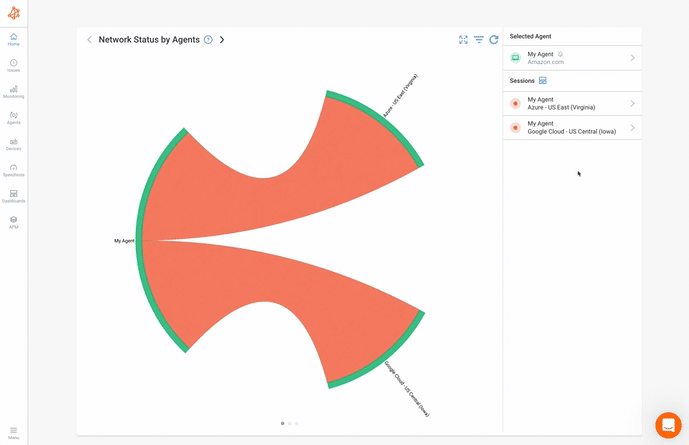
Deploying Network Monitoring Agents at different ends of your network, Obkio continuously exchanges synthetic traffic to provide accurate measurements without external interference, ensuring a seamless user experience. Say hello to effortless and precise network capacity measurements with Obkio's Network Performance Monitoring tool.

Obkio monitors network capacity and network performance and end-to-end network performance and uses continuous synthetic traffic from Network Monitoring Agents deployed in key network locations like offices, data centers and clouds.
For your end-to-end network capacity monitoring setup, you’ll need the following Monitoring Agents (which Obkio’s Onboarding Wizard with help you deploy):
- Local Agents: Installed in the targeted office location where you want to monitor network capacity and network performance. There are several Agent types available (all with the same features), and they can be installed on MacOS, Windows, Linux and more.
- Public Monitoring Agent: These are deployed over the Internet and managed by Obkio. They compare performance up to the Internet and quickly identify if the problem is global or specific to the destination. For example, measure network capacity between your branch office and Google Cloud.
The Agents monitor network capacity, as well as other key network metrics in your network by sending and monitoring synthetic traffic through your network every 500ms for the most precise network performance measurements.
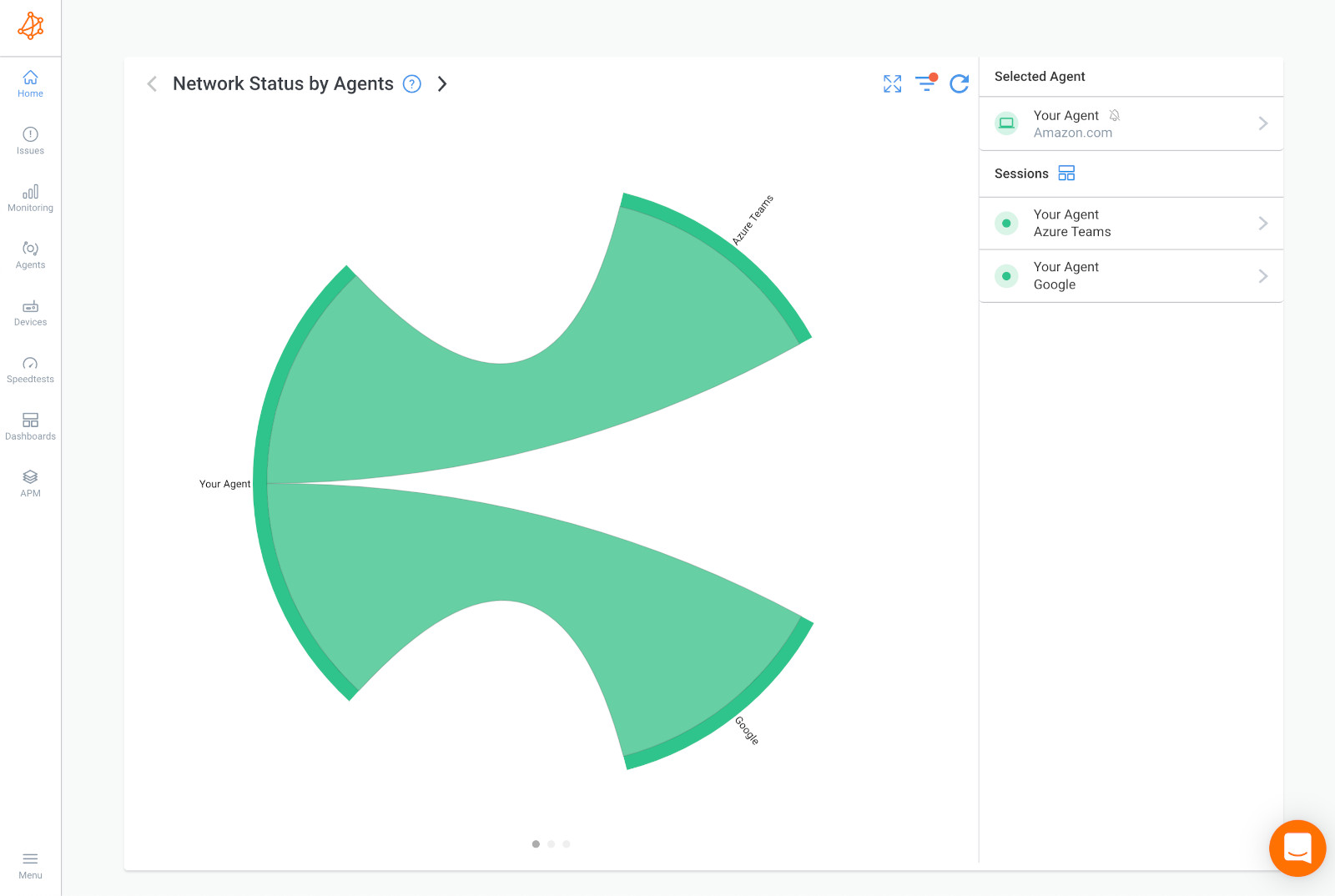
Network devices and equipment are prone to problems like high CPU usage and high bandwidth usage - which is why Network Device Monitoring plays a crucial role in accurately monitoring and planning network capacity within a network.
So when you’re looking to monitor network capacity with Obkio, make sure to activate Network Device Monitoring.
Monitoring network devices is crucial for network capacity monitoring because these devices are the building blocks of your network infrastructure. They include routers, switches, servers, firewalls, and other hardware components that manage and direct the flow of data within your network.
Network devices can become bottlenecks if they are operating near or beyond their capacity. By monitoring these devices, you can pinpoint where congestion or limitations may be occurring in your network and take steps to alleviate them.
When conducting network capacity monitoring, it's essential to monitor a range of network devices to get a comprehensive understanding of your network's health and performance.
- Routers: Routers are responsible for directing data traffic between different networks. Monitoring routers helps you assess the overall network traffic and identify potential bottlenecks or congestion points. By analyzing router performance, you can ensure that data is flowing smoothly and that routing decisions are efficient.
- Switches: Switches are critical for local network traffic within subnets or VLANs. Monitoring switches help you track network traffic patterns within specific segments of your network. This information is valuable for optimizing local network performance and capacity planning.
- Firewalls: Firewalls play a crucial role in network security by controlling incoming and outgoing traffic. Monitoring firewalls allows you to track traffic patterns and detect anomalies, helping to ensure that your network is secure while maintaining optimal capacity.
- Load Balancers: Load balancers distribute network traffic across multiple servers to prevent network overload and improve application performance. Monitoring load balancers helps you ensure that traffic is evenly distributed, preventing the overloading of specific servers and optimizing overall capacity.
- Servers: Servers are the heart of many network services and applications. Monitoring server performance, including CPU usage, memory usage, and disk space, is vital for assessing the capacity needs of your applications. It allows you to identify resource constraints and plan for server upgrades or scaling.
- Access Points (APs): Access points are used in wireless networks to connect devices to the network. Monitoring APs helps you track the number of connected devices, signal strength, and wireless traffic patterns. This information is crucial for optimizing Wi-Fi network capacity.
- Switched PDUs (Power Distribution Units): Monitoring switched PDUs enables you to manage power consumption and remotely control power to devices. This can help you reduce energy costs and prevent power-related network interruptions.
- Network Attached Storage (NAS) Devices: NAS devices store and share data across the network. Monitoring NAS devices helps you track storage usage and performance, ensuring that your data storage capacity meets the demands of your organization.
- VoIP Gateways: For organizations using Voice over Internet Protocol (VoIP) services, monitoring VoIP gateways is essential for maintaining call quality and capacity. It allows you to identify and address issues that may affect voice communication.
- Network Security Appliances: These devices, such as intrusion detection systems (IDS) and intrusion prevention systems (IPS), help protect your network from security threats. Monitoring these appliances helps ensure that they are operating effectively without impacting network capacity.
By monitoring these various network devices, you can gain a comprehensive view of your network's capacity, performance, and security. This information is essential for proactive capacity planning, troubleshooting, and ensuring that your network can meet the demands of your organization and its users while maintaining optimal performance.
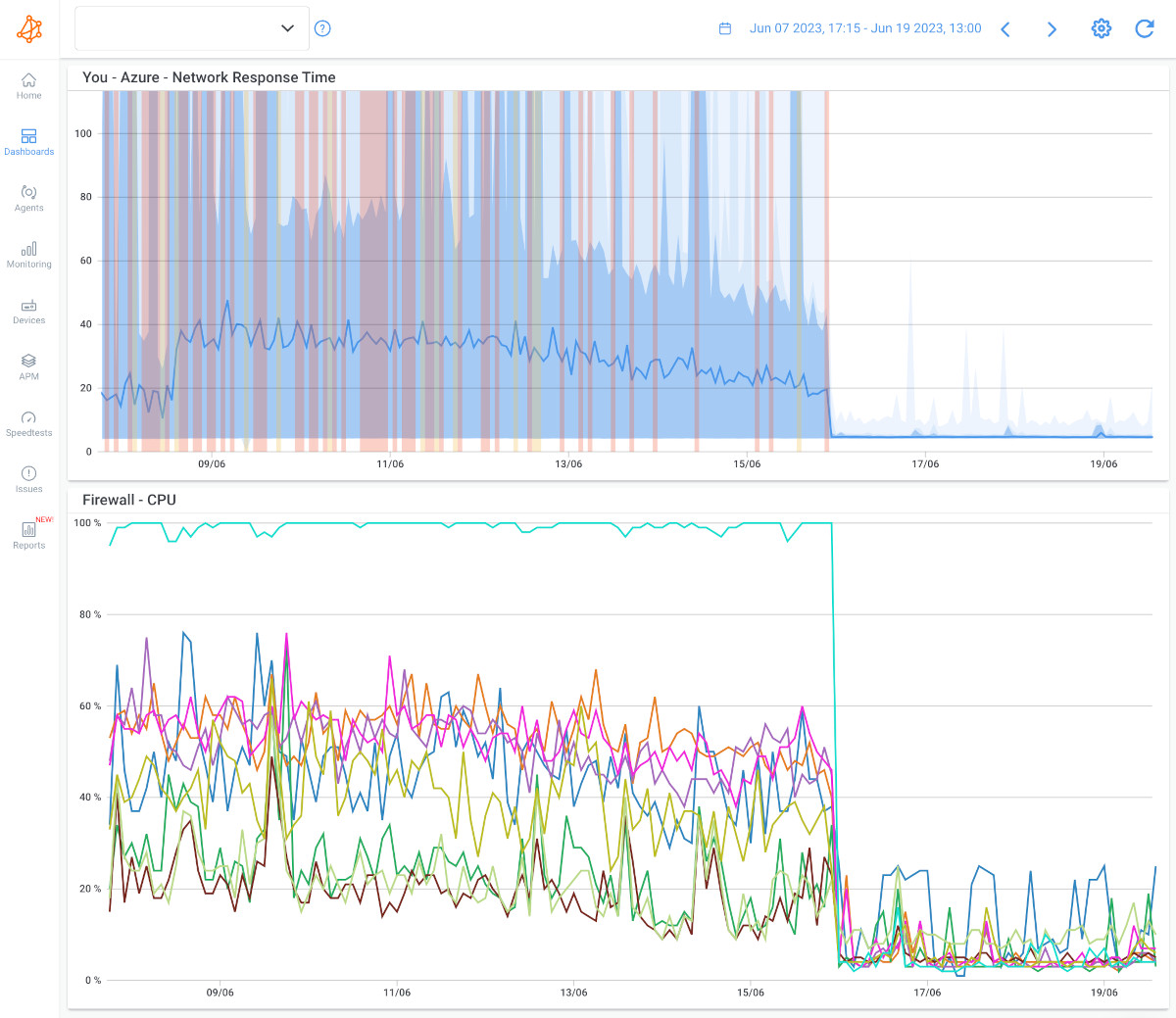
When monitoring network bandwidth, it is essential to consider other network metrics that affect network capacity and give you a complete understanding of network performance. These metrics provide valuable insights into various aspects of the network and help identify potential issues affecting network capacity.
Lucky for you, Obkio measures a variety of other network metrics that impact network capacity and are essential to end-to-end network performance Here are some key network metrics to measure:
- Bandwidth Usage: Monitor the total bandwidth utilization of your network in real time. This metric shows how much of your available bandwidth is currently being used and helps identify periods of peak demand.
- Throughput: Measure the actual data transfer rate between devices or across network segments. Throughput metrics provide insights into the network's ability to handle data traffic.
- Latency (Round-Trip Time): Latency measures the delay in data transmission between source and destination. Lower latency indicates faster network responsiveness, critical for real-time applications like VoIP and video conferencing.
- Packet Loss Rate: Packet loss occurs when data packets are not successfully delivered from source to destination. A low packet loss rate is essential for maintaining the integrity and reliability of data transmissions.
- Jitter: Jitter is the variation in latency between data packets. Consistent, low jitter is important for maintaining the quality of real-time applications, like voice and video calls.
- Error Rates: Monitor error rates on network devices and interfaces. High error rates can indicate hardware or cabling issues that may impact network capacity.
- Device Resource Utilization: Measure the CPU and memory utilization of key network devices, such as routers and switches. High resource utilization can lead to performance issues and may require hardware upgrades.
- Queue Length: Queue length metrics indicate how many packets are waiting in network device queues. Long queues can result in delays and decreased network performance.
- TCP/IP Metrics: Monitor TCP/IP-specific metrics like retransmission rates and TCP window size. These metrics provide insights into the efficiency and reliability of data transmission over TCP/IP.
- Application Performance: Assess the performance of critical applications running on your network. Measure metrics like response times, transaction rates, and server load to ensure applications can meet user demands.
- Quality of Service (QoS) Metrics: Evaluate QoS metrics to ensure that priority traffic (e.g., voice or video) receives the necessary bandwidth and does not experience degradation during peak times.
By measuring these network metrics, you can proactively identify performance bottlenecks, plan for capacity expansion, troubleshoot issues, and ensure that your network can deliver the performance and reliability required to meet the demands of your organization and users.
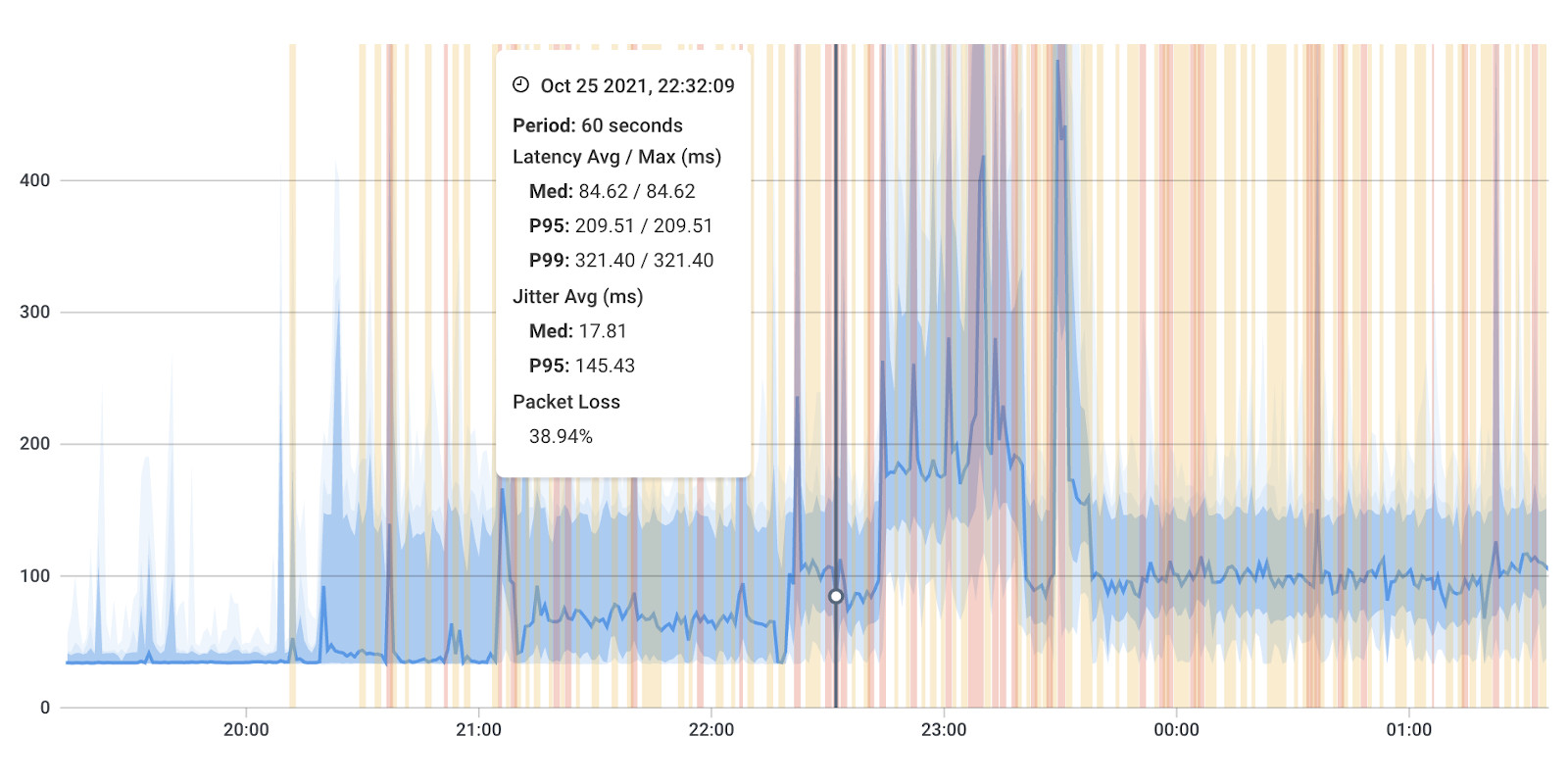
Once your Monitoring Agents are deployed, and your network devices are configured, Obkio's Network Performance Monitoring tool continuously measures network capacity using a synthetic, end-to-end approach.
Obkio generates synthetic traffic, which simulates real data packets, to assess network capacity. This synthetic traffic is transmitted between Monitoring Agents deployed at different endpoints of the network.
- Continuous Traffic Exchange: The Monitoring Agents continually exchange synthetic traffic to gauge the actual network capacity between these endpoints. This process enables consistent and real-time monitoring of network capacity performance.
- End-to-End Measurements: By measuring network capacity end-to-end (from one monitoring agent to another), Obkio captures the genuine network behaviour experienced by users. This approach removes the reliance on external factors or user activity for measurements, providing a more controlled and precise assessment of network capacity.
- Data Collection and Analysis: As the synthetic traffic flows between the monitoring agents, Obkio collects and analyzes performance data. The tool records throughput, latency, and packet loss metrics, offering comprehensive insights into the network's behaviour and capacity.
- Real-Time Reporting: Obkio's Network Performance Monitoring tool provides real-time reporting and network visualization of the measured network capacity. Network administrators can access user-friendly dashboards and charts that display network capacity utilization and performance metrics across different network segments.
- Ongoing Monitoring: The continuous exchange of synthetic traffic ensures ongoing monitoring of network capacity performance. This allows network administrators to identify trends, detect anomalies, and proactively address any network capacity-related issues before they impact user experience.
By utilizing synthetic traffic and end-to-end measurements, Obkio eliminates external variables that could influence network capacity measurements. This approach guarantees that the measured network capacity accurately reflects the network's capabilities and provides valuable insights for optimizing network performance and resource allocation.
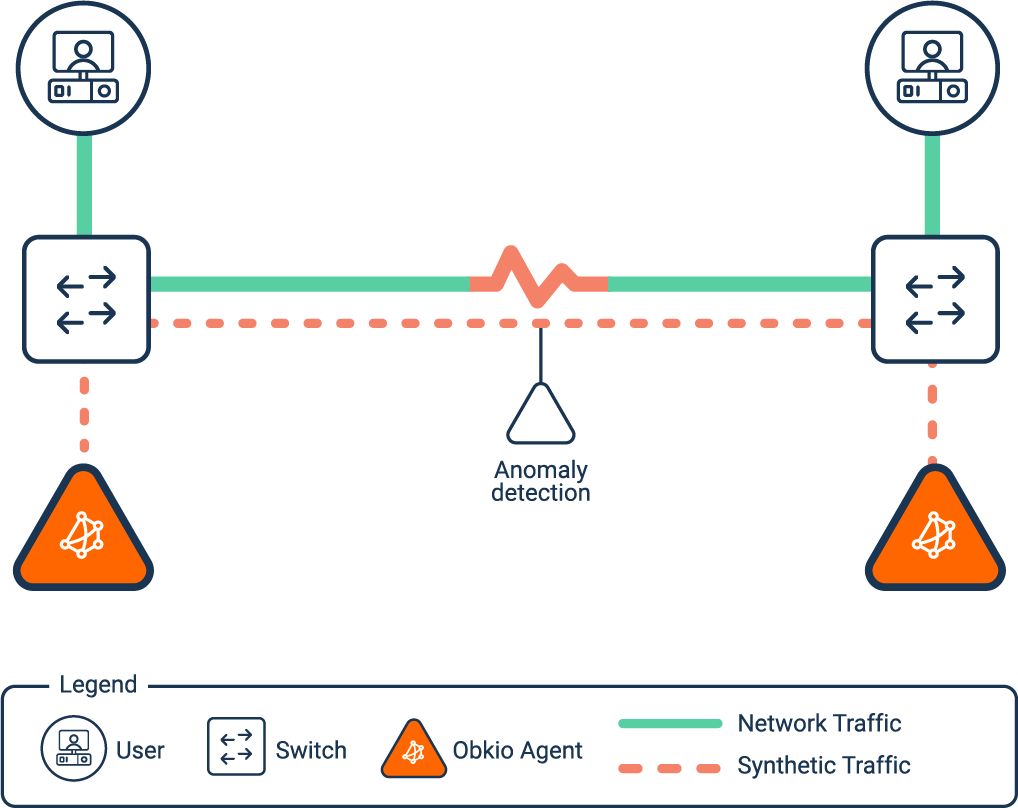
In the world of networking, knowing how to measure network capacity is like having a roadmap to navigate the digital highway. It's a fundamental part of ensuring your network runs smoothly and efficiently.
So, let's dive right in and uncover the essential tools and techniques that keep your data flowing at its best.
Network capacity is measured through various metrics and factors that collectively assess the capability of a network to handle data traffic effectively. While network capacity is a multifaceted concept, here are some key methods and metrics used to measure it:
1. Bandwidth Measurement:
Bandwidth is a fundamental component of network capacity, and measuring it is essential. Bandwidth is typically expressed in bits per second (bps) and can be measured using tools like network speed test tools. Higher bandwidth indicates a network's ability to handle more data at once.
2. Throughput:
Throughput measures the actual data transfer rate on a network connection. It accounts for any limitations imposed by factors like network congestion, packet loss, and latency. Throughput provides a practical measurement of a network's capacity to move data effectively.
3. Latency:
Latency, often measured in milliseconds (ms), quantifies the delay in data transmission between a source and destination. Low latency indicates faster data transfer and better network capacity for real-time applications.
4. Packet Loss:
Packet loss measures the percentage of data packets that fail to reach their destination. Minimal packet loss is critical for network capacity, as high loss rates can result in data retransmissions, reducing effective capacity.
5. Jitter:
Jitter measures the variation in latency over time. Consistent, low jitter is important for real-time applications like VoIP and video conferencing, as it ensures a stable, predictable network capacity.
6. Resource Utilization:
Monitoring network devices' resource utilization, such as CPU and memory, helps assess their capacity. High resource utilization can indicate limitations that may affect network capacity.
7. Concurrent Connections:
For servers and networking equipment, the number of concurrent connections they can handle is a measure of their capacity. Exceeding this limit can lead to service degradation.
8. Quality of Service (QoS) Metrics:
QoS metrics assess the network's ability to prioritize certain types of traffic. By measuring QoS metrics like queuing delay and dropped packets, you can gauge the network's capacity to maintain service quality.
9. Peak Traffic Analysis:
Analyzing network traffic patterns during peak usage times provides insights into the network's capacity to handle the highest demands effectively. This analysis informs capacity planning.
10. Load Testing:
Load testing involves subjecting the network to simulated heavy loads to evaluate how it performs under stress. This method helps identify potential capacity bottlenecks.
11. Resource Scaling:
Network capacity can also be measured by assessing the ease and effectiveness of scaling network resources, such as adding more servers, routers, or bandwidth, to meet increased demands.
12. End-to-End Performance Metrics:
Measuring network performance from one end of the network to another (end-to-end) helps capture the overall network behaviour experienced by users, offering a holistic view of network capacity.
In practice, network capacity measurement involves a combination of these methods and metrics to provide a comprehensive assessment of a network's ability to handle data traffic, ensure reliable performance, and meet the demands of users and applications. Monitoring tools and analysis are essential for ongoing network capacity management and optimization.
Learn how to measure network performance with key network metrics like throughput, latency, packet loss, jitter, packet reordering and more!
Learn more

In the dynamic world of networking, where information flows like a digital river, understanding the nuances of network performance is paramount. Two terms that often come into play when discussing the capacity and capabilities of a network are "network capacity" and "bandwidth." While these terms may seem interchangeable at first glance, they represent distinct aspects of a network's functionality.
In this section, we embark on a journey to unravel the differences between network capacity and bandwidth. We'll delve into what each term means, their roles in optimizing network performance, and why grasping these distinctions is crucial for efficient network management.
So, let's explore the subtleties that define these concepts and gain a deeper understanding of the intricacies of network performance optimization.
Network capacity, often referred to as "network capacity planning" or "network capacity management," is a broader concept that encompasses the overall capability of a network to handle data traffic, applications, and users.
It involves assessing the network's ability to handle varying levels of data traffic, not just in terms of bandwidth but also in terms of other factors like hardware capabilities, latency, packet loss, and more.
Network capacity planning considers the network's ability to maintain performance, reliability, and responsiveness under different conditions, including peak usage times and future growth projections.
This planning process involves analyzing various network resources, optimizing configurations, and ensuring that the network can meet the demands placed upon it without congestion or degradation of service.
Bandwidth, on the other hand, is a specific component of network capacity. It refers to the maximum data transfer rate that a network connection can support in a given period, typically measured in bits per second (bps), such as megabits per second (Mbps) or gigabits per second (Gbps).
Bandwidth represents the "width" or capacity of the network "pipe" for data to flow through. It determines how much data can be transmitted over the network connection at a given time.
High bandwidth connections can carry more data simultaneously and are often associated with faster data transfer speeds. However, bandwidth is just one aspect of network capacity and does not provide a complete picture of the network's overall performance.
It's important to note that having ample bandwidth is crucial for network capacity, but other factors like hardware performance, congestion management, and efficient data routing also play a significant role in determining the network's capacity.
In summary, while bandwidth is a critical component of network capacity, network capacity encompasses a broader range of considerations, including bandwidth, to ensure that a network can deliver optimal performance, reliability, and responsiveness for all its users and applications. Network capacity planning takes into account various factors to ensure that the network's capacity meets both current and future needs.
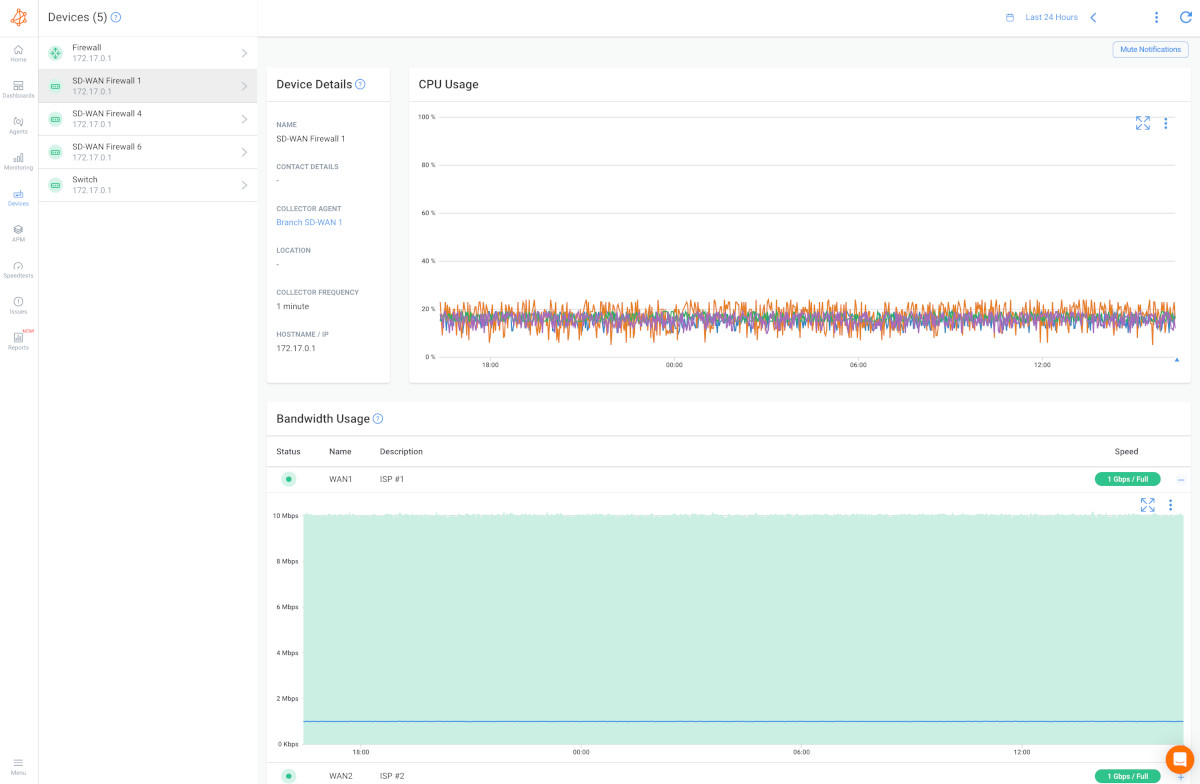

Network capacity can be affected by a variety of factors, and understanding these influences is essential for maintaining optimal network performance. As networks grow in complexity and data demands surge, managing and optimizing network capacity has become an ever more critical challenge.
Enter Network Capacity Monitoring, a powerful approach that equips businesses with the tools and insights needed to maintain network excellence. At the heart of this capability lies Obkio's Network Performance Monitoring (NPM) tool, a comprehensive solution designed to not only measure network capacity but also identify and troubleshoot issues affecting it - or issues caused by it.
Network capacity issues are problems or challenges that can arise when a network reaches its limits in terms of handling data traffic, users, or applications. These issues can impact the performance, reliability, and responsiveness of a network.
Let’s go through some of the common issues affecting network capacity or occur because of poor network capacity.
- Bandwidth Limitations: The available bandwidth on your network connection is a fundamental factor. Limited bandwidth can lead to congestion and reduced capacity, especially during periods of high traffic.
- Network Congestion: When there is excessive traffic on a network segment or device, congestion can occur. WAN or LAN congestion leads to delays, packet loss, and reduced effective capacity.
- Hardware Limitations: The capacity of network devices, such as routers, switches, and firewalls, can impact network capacity. Outdated or undersized hardware may struggle to handle increasing traffic demands.
- Software and Firmware: The software running on network devices, as well as their firmware, can affect their performance and capacity. Regular updates and optimizations are necessary to maintain capacity.
- Packet Loss: High packet loss rates can reduce effective network capacity. Lost packets require retransmission, which consumes bandwidth and increases latency.
- Latency: High latency, or network delay, can affect the perceived capacity of a network, especially for real-time applications. Users may experience sluggish responses, impacting their ability to utilize the network effectively.
- Jitter: Variations in latency, known as jitter, can disrupt real-time applications like VoIP and video conferencing. Jitter can reduce the network's capacity to deliver a smooth and consistent user experience.
- Quality of Service (QoS) Settings: Network policies and QoS settings can allocate priority to certain types of traffic. Misconfigured or inadequately managed QoS settings can impact the capacity available for critical applications. For example, QoS for VoIP.
- Hardware Constraints: Outdated or undersized network hardware, such as routers and switches, can limit a network's capacity to handle increasing traffic demands.
- Inefficient Routing: Poorly optimized routing configurations can lead to inefficient data paths, which can negatively impact network capacity and performance.
- Security Measures: Network security measures, such as firewalls and intrusion detection systems, can consume network resources. While essential for protection, they should be configured to minimize their impact on capacity
- Traffic Patterns: The types and volume of network traffic can vary significantly throughout the day. Understanding and managing these patterns is crucial for optimizing network capacity.
- Protocol Efficiency: Different network protocols have varying levels of efficiency. Some protocols may be more bandwidth-intensive than others, affecting capacity.
- Resource Scaling: The ability to scale network resources, such as adding more servers or increasing bandwidth, directly impacts capacity management.
- Environmental Factors: Environmental conditions like temperature and humidity can affect network hardware performance and reliability.
- Physical Layer Issues: Problems with physical layer components, such as cables and connectors, can introduce signal loss and reduce network capacity.
- Interference: Electromagnetic interference or radio frequency interference can disrupt wireless networks and impact capacity.
- Denial-of-Service (DoS) Attacks: Malicious attacks, such as DoS attacks, can flood a network with traffic, overwhelming its capacity and causing disruptions.
- Resource Allocation: Inefficient allocation of network resources, such as IP addresses or DNS resolution, can lead to resource exhaustion and impact capacity.
Learn how to identify network issues by looking at common problems, causes, consequences and solutions.
Learn more

As businesses ride the digital wave, one thing becomes clear: a robust network is non-negotiable. Today's networks are bustling hubs, playing host to a flurry of devices, apps, and user demands. To keep up with this whirlwind, enter Network Capacity Planning—a strategic playbook for ensuring your network not only handles the present but also gears up for what lies ahead.
Think of it as your trusty guide, helping you map out your network's growth, optimize its performance, and keep the digital wheels turning smoothly. In this section, we'll take a casual stroll through the realm of Network Capacity Planning, uncovering how it equips organizations to stay ahead of the curve, manage capacity like a pro, and keep their digital engines running strong.
Network Capacity Planning is the strategic process of assessing, forecasting, and managing a network's capacity to ensure it can meet current and future demands. It involves meticulously analyzing various network elements, such as bandwidth, hardware resources, and traffic patterns, to determine if the network has the capability to handle increasing data loads and user requirements.
The ultimate goal of Network Capacity Planning is to proactively address potential bottlenecks, optimize resource allocation, and ensure that the network operates at its peak efficiency.
Network Capacity Planning is vital for several reasons:
- Resource Allocation: It enables organizations to allocate resources, such as bandwidth and hardware, optimally, preventing underutilization or overutilization.
- Performance Optimization: Capacity planning ensures that the network can consistently deliver high performance, reducing latency, packet loss, and congestion.
- Cost Efficiency: Proper planning minimizes unnecessary expenses, such as over-provisioning, while preventing costly downtime due to capacity-related issues.
- Scalability: It allows for seamless network growth and expansion, accommodating new devices, applications, and users without compromising performance.
- User Satisfaction: Ensuring a network's capacity aligns with user demands is critical for maintaining user satisfaction and productivity.
Network Capacity Monitoring serves as the foundation of effective Network Capacity Planning. By continuously assessing network performance and collecting valuable data, it provides organizations with insights necessary to make informed decisions. Here's how Network Capacity Monitoring supports the planning process:
- Real-Time Data: Network Capacity Monitoring offers real-time visibility into network performance, including bandwidth utilization, latency, packet loss, and more. This data is invaluable for understanding the network's current state.
- Trend Analysis: Over time, Network Capacity Monitoring tools accumulate historical data, allowing organizations to identify usage patterns, peak demand periods, and potential capacity limitations.
- Proactive Issue Identification: By detecting anomalies and deviations from expected performance metrics, Network Capacity Monitoring can alert administrators to potential issues before they impact users.
- Resource Allocation: It provides insights into resource utilization, helping organizations allocate bandwidth and other resources efficiently.
- Capacity Forecasting: Network Capacity Monitoring tools often include forecasting capabilities, enabling organizations to predict future capacity needs based on historical data and growth projections.
In essence, Network Capacity Monitoring is the compass that guides Network Capacity Planning. It empowers organizations to navigate the complex terrain of network management, ensuring their networks remain agile, reliable, and prepared to meet the ever-evolving demands of the digital age.


In this section, we'll delve into a real-world use case that highlights the dynamic interplay between two essential pillars of network management: Network Capacity Monitoring and Network Capacity Planning. Through this practical example, we'll explore how these strategies join forces to tackle the challenges posed by a rapidly evolving digital landscape.
A fast-growing e-commerce company has been experiencing increased website traffic, a larger customer base, and the introduction of new services such as real-time chat support. They want to ensure that their network infrastructure can handle this growth while maintaining excellent customer experience.
Step 1. Current Network Assessment:
The first step is to assess the current network infrastructure. The company performs a network assessment to review its existing network architecture, including routers, switches, servers, and bandwidth. Our Network Assessment Template can help you with that.
Unlock the power of network assessment with our step-by-step network assessment template. Follow this ultimate blueprint for ongoing network excellence.
Learn more

Step 2. Traffic Analysis:
Network administrators use Network Capacity Monitoring tools to analyze traffic patterns. They identify peak usage times, frequently accessed pages, and any bottlenecks in data flow.
Step 3. Bandwidth Evaluation:
The company examines their current bandwidth utilization to determine if it's sufficient. They may discover that during peak hours, the website experiences slowdowns due to limited bandwidth.
Step 4. Future Growth Projections:
Using historical data and growth projections, the e-commerce company estimates future network demands. For instance, they anticipate a 20% increase in website traffic over the next year.
Step 5. Hardware and Infrastructure Assessment:
Network administrators assess the capacity of their existing hardware. They identify any devices nearing their capacity limits and evaluate whether additional equipment is needed.
Step 6. Quality of Service (QoS) Implementation:
To prioritize real-time chat support and ensure a seamless customer experience, the company configures QoS settings to allocate more bandwidth to this service.
Step 7. Load Balancing:
To evenly distribute traffic and prevent overloads on specific servers, the company implements load-balancing solutions. This ensures efficient resource utilization.
Step 8. Bandwidth Upgrade:
Recognizing the need for additional bandwidth, the company contacts their internet service provider (ISP) to discuss bandwidth upgrade options.
Step 9. Capacity Planning Report:
A comprehensive report is created, summarizing findings and recommendations. This report includes a roadmap for network improvements, hardware upgrades, and anticipated costs.
The e-commerce company successfully upgrades their network infrastructure, including adding more bandwidth to accommodate increased traffic. Load balancing solutions prevent any single server from becoming overloaded, ensuring website reliability.
With QoS settings in place, real-time chat support remains responsive, even during peak usage periods. The network is well-prepared to handle future growth, maintaining a high-quality customer experience.
This example demonstrates how Network Capacity Planning involves assessing the current state of the network, analyzing traffic patterns, and making strategic upgrades to accommodate growth while maintaining performance and quality of service. It ensures that the network remains a reliable asset as the business expands.
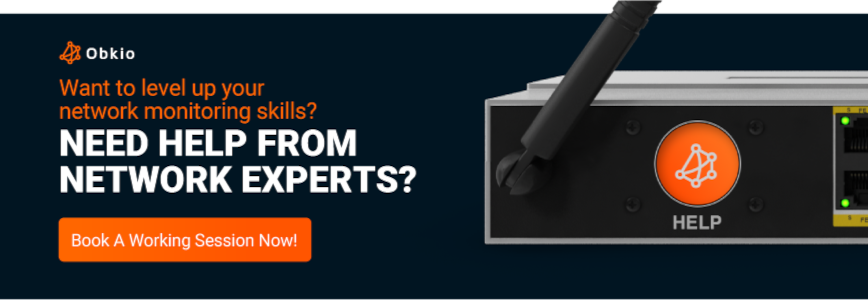
In the intricate world of network management, understanding the distinctions between Network Capacity and Network Load. These two concepts, while related, play distinct roles in ensuring your network operates smoothly. In this section, we'll unravel the complexities of network dynamics, shedding light on what network capacity and network load truly entail.
Definition: Network capacity refers to the maximum amount of data that a network can handle or the highest data transfer rate it can sustain under ideal conditions. It represents the network's potential and is often measured in bits per second (bps) or megabits per second (Mbps).
Static Measure: Network capacity is a relatively static measurement. It represents the network's design and infrastructure capabilities and is not dependent on the current traffic load.
Planning and Design: Network capacity planning involves assessing the network's infrastructure, bandwidth, and hardware to ensure it can handle current and future demands. It's about provisioning resources to support expected usage.
Scenario: Think of network capacity as the width of a highway. It tells you how many lanes are available for traffic, regardless of how many vehicles are actually on the road at any given time.
Definition: Network load, often referred to as network traffic load or simply "load," is the current volume of data or traffic flowing through a network at a specific moment. It represents the real-time demand on the network and is measured in terms of data rate (bps or Mbps) or packets per second (pps).
Dynamic Measure: Network load is dynamic and changes continuously based on the volume of data being transmitted or received by devices and applications on the network.
Performance Monitoring: Network load monitoring involves tracking the current usage of network resources to ensure that the network is operating efficiently and without congestion. It helps identify spikes in traffic or periods of high demand.
Scenario: Imagine network load as the actual number of vehicles on the highway at a particular time. It tells you how crowded the highway is right now.
In essence, network capacity is the theoretical capability of a network, while network load is the practical, real-time usage of that network. Capacity planning ensures that a network has the necessary infrastructure to handle expected loads without becoming congested. Monitoring network load helps ensure that the network is functioning optimally and can respond to changing demands.
Optimizing and improving network capacity is essential for ensuring that your network can handle increasing demands, deliver optimal performance and scale gracefully into the future. This section explores the strategies and best practices that empower you to maximize your network's capacity, overcome bottlenecks, and maintain seamless operations with network optimization strategies.
Here are several strategies and best practices to help you achieve this:
- Network Capacity Monitoring: Implement a robust network capacity monitoring solution, such as Obkio's Network Performance Monitoring (NPM) tool. Continuous monitoring provides insights into your network's behaviour, allowing you to identify bottlenecks and issues proactively.
- Bandwidth Management: Allocate bandwidth efficiently by prioritizing critical applications and services through Quality of Service (QoS) settings. This ensures that essential traffic receives the necessary bandwidth to function without interruptions.
- Traffic Analysis: Analyze traffic patterns to understand how data flows through your network. This insight helps you optimize traffic routing, reduce unnecessary data transmission, and identify areas for improvement.
- Load Balancing: Implement load-balancing solutions to evenly distribute traffic across servers and network paths. Load balancing prevents overutilization of resources and optimizes network capacity.
- Traffic Shaping: Use traffic shaping techniques to control the flow of data on your network. This can help reduce congestion and prioritize critical traffic during peak usage times.
- Network Upgrades: Invest in hardware upgrades, such as routers, switches, and access points, to support higher capacity. Upgrading to faster and more capable devices can eliminate capacity bottlenecks.
- Scalability: Ensure that your network infrastructure is scalable. Plan for future growth by selecting hardware and configurations that can accommodate additional users and devices.
- Optimized Routing: Review and optimize network routing configurations to ensure efficient data paths. Eliminate unnecessary detours and improve data flow.
- Firmware and Software Updates: Keep network devices up to date with the latest firmware and software updates. These updates often include performance enhancements and security patches.
- Reduce Network Noise: Minimize unnecessary broadcast traffic and reduce network noise by implementing network segmentation and VLANs. This prevents traffic from reaching areas where it's not needed.
- Security Measures: Implement security measures efficiently to protect your network without introducing excessive delays or resource overhead. Fine-tune firewall rules and intrusion detection systems to minimize impact on capacity.
- Resource Allocation: Ensure efficient allocation of network resources, including IP addresses, DNS resolution capacity, and available ports, to prevent resource exhaustion.
- Environmental Monitoring: Regularly monitor environmental conditions like temperature and humidity to ensure network hardware operates optimally.
- Wireless Optimization: If you have a wireless network, optimize it by selecting the right channels, minimizing interference, and ensuring proper signal coverage.
- Regular Testing: Conduct regular network performance testing and network load testing to identify potential capacity issues before they impact users.
- Capacity Planning: Develop a comprehensive capacity planning strategy based on historical data and growth projections. This helps you allocate resources effectively and avoid unexpected capacity limitations.
By implementing these strategies and continuously monitoring your network, you can optimize and improve network capacity, ensuring that your network remains responsive, reliable, and capable of meeting the demands of your organization and its users.
Learn to use network optimization and monitoring to optimize network performance, improve your end-user experience, and compare performance from the past.
Learn more

As we conclude our journey into the realm of Network Capacity Monitoring and Planning, we find ourselves at the crossroads of understanding and action. It's not just about knowing the importance of these strategies; it's about putting them into action and navigating the road ahead.
Network Capacity Monitoring isn't merely a passive endeavor; it's a dynamic process that must become an integral part of your organization's network management strategy. Embrace a proactive approach to network monitoring and optimization. Continuously assess, analyze, and adapt to changing network demands. Monitor performance, detect anomalies, and take prompt corrective actions to ensure that your network operates at its best.
Network Capacity Planning, too, is an ongoing journey. Your network is not static; it evolves with your business. Therefore, revisit your capacity planning strategies regularly. Incorporate growth projections, stay updated on emerging technologies, and remain agile in your network infrastructure decisions. By doing so, you'll be well-prepared to meet the demands of tomorrow.

Ready to embark on this journey of network excellence? Obkio's Network Performance Monitoring tool stands ready to empower you with real-time insights, proactive monitoring, and the capacity to optimize your network for today and tomorrow. Deploy Network Capacity Monitoring and Network Performance Monitoring with Obkio to gain a competitive edge, deliver an exceptional user experience, and ensure that your network remains the lifeblood of your digital operations.
The road ahead is filled with opportunities and challenges. With the right tools and strategies at your disposal, you're well-equipped to navigate this journey and unlock the full potential of your network. So, let's step forward together and ensure that your network continues to be a reliable and robust asset in the ever-evolving digital landscape.



























 Obkio Blog
Obkio Blog





